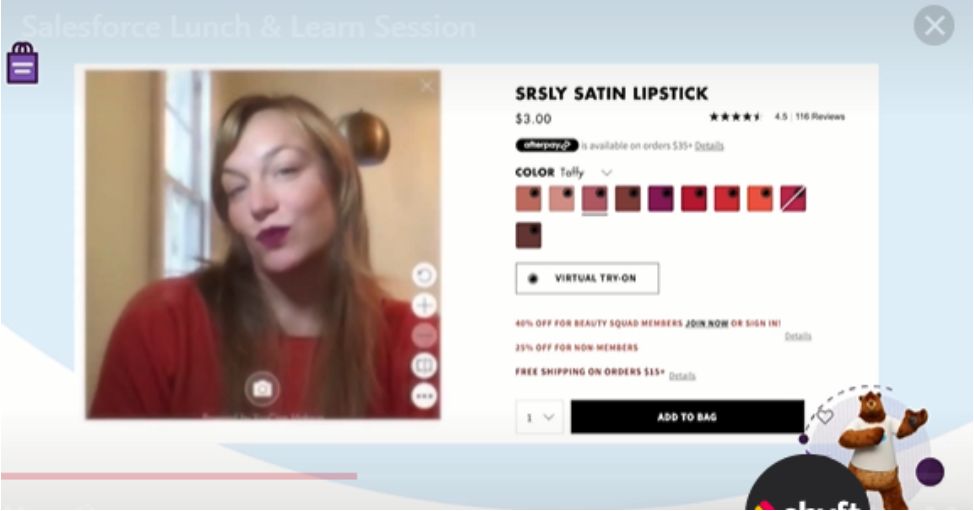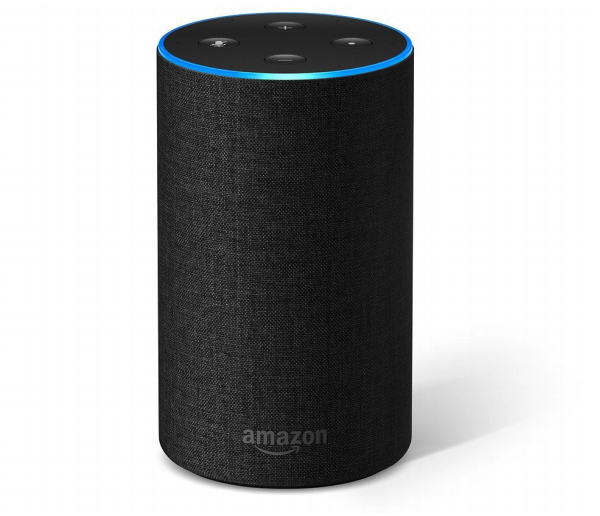
Nitheesh NH
NRF 2021, the annual “Retail’s Big Show” event hosted by the National Retail Federation (NRF), is taking place online over six days between January 12 to 22.
The Coresight Research team is presenting takeaways from each day of the event in separate reports. Read our coverage of day one here. In this report, we offer 10 key insights from day two.
 e.l.f Cosmetics offers virtual try-on technology on its website
e.l.f Cosmetics offers virtual try-on technology on its website
Source: e.l.f Cosmetics[/caption] Consumers can place voice orders and receive voice delivery alerts through Amazon smart speakers
Consumers can place voice orders and receive voice delivery alerts through Amazon smart speakers
Source: Amazon[/caption] Robrev and Zanuldin highlighted two case studies of successful implementation of voice commerce tools in 2020:
NRF 2021 Day Two: 10 Key Insights
On the second day of NRF 2021, speakers honed in on the importance of leveraging data and AI to better engage the consumer and empower employees, while also highlighting technologies that are gaining traction in retail, such as voice commerce. In addition industry leaders discussed key strategic priorities such as social responsibility and sustainability. 1. Retailers Can Leverage the “Data Explosion” To Enhance Customer Experiences and Loyalty In Microsoft’s “Retail 2020: Wow What a Year!” presentation, Shelley Branston, Corporate VP for Retail and Consumer Goods at Microsoft, highlighted several innovations that the company sees as key areas of investment for retailers moving forward. Chief among them was the importance of leveraging the “data explosion”—created by consumers spending more time online—to better capture the interest and dollars of the modern consumer. Branston noted that every minute, consumers generate 40 petabytes of data in retail, and indicated that opportunities remain for retailers to make use of this information. Brands and retailers can use consumer data to personalize their promotions and loyalty programs to create lasting, valuable relationships with customers. There has rarely been a more opportune time to capitalize on changing consumer behaviors and create long-term relationships: 75% of US consumers reported that they adopted a new shopping behavior during the pandemic, according to McKinsey, and Branston reported that four in 10 European consumers purchased something new online in 2020 that they had only ever previously bought in-store. Using Microsoft technologies to harness this data to understand changed consumer behavior, Dick’s Sporting Goods was able achieve a 33% increase in revenue generated by promotions. Moving into 2021, finding ways to best utilize big data will likely be a priority for many major retailers. 2. Partnerships Can Take Retailers to the Next Level Branston highlighted the importance of partnerships in Microsoft’s presentation, arguing that the Covid-19 pandemic has made it clear that virtually no retailers are resilient enough to handle large shocks without working with others in the industry. Partnerships with tech providers and other retailers are now a vital part of a flexible retail strategy. Branston cited the successful partnership between Walmart and AT&T, where the telecommunications company helped empower Walmart to improve digital health services in its stores, as a prime example of the kind of mutually beneficial partnerships she expects to see in retail moving forward. The data appear to back up the partnership trend: Kearney data indicate that partnerships generally create a 10–15% lift in top-line performance. 3. Data Analytics Provides Valuable Insights for Customer Engagement and Retention International beauty brand e.l.f. Cosmetics is gaining traction among Gen Z consumers, with over 9 million followers across social platforms, according to the company. At NRF 2021, Brigitte Barron, Director of CRM & Customer Growth at e.l.f. Cosmetics, highlighted the strategies that the company employs to engage and retain customers via its website, leveraging Salesforce and Google Analytics technology:- The website makes dynamic product recommendations based on what the customer has purchased before or based on what other customers have shopped.
- Customers may use virtual try-on technology to test products.
 e.l.f Cosmetics offers virtual try-on technology on its website
e.l.f Cosmetics offers virtual try-on technology on its websiteSource: e.l.f Cosmetics[/caption]
- e.l.f alerts consumers who have a high intent to purchase with a pop-up notification, asking if they would like to sign up for the brand’s Beauty Squad loyalty program, offering free shipping on the first order. The company’s loyalty members comprise 70% of e-commerce sales and have a 117% higher lifetime value than non-members.
- By integrating Salesforce e-commerce with Google Analytics 360, e.l.f. is able to understand customer behavior and loyalty patterns in order to offer personalized recommendations of relevant products to loyaly members.
 Consumers can place voice orders and receive voice delivery alerts through Amazon smart speakers
Consumers can place voice orders and receive voice delivery alerts through Amazon smart speakersSource: Amazon[/caption] Robrev and Zanuldin highlighted two case studies of successful implementation of voice commerce tools in 2020:
- Scentbird, a digitally native perfume subscription brand, worked with Amazon to add Alexa delivery notification features to its fulfillment infrastructure, helping keep consumers informed and engaged during the fulfillment process.
- Amazon worked with Exxon to implement voice-driven pay options at gas stations nationwide, enabling touch-free purchase options for consumers wary of touching public surfaces.